-
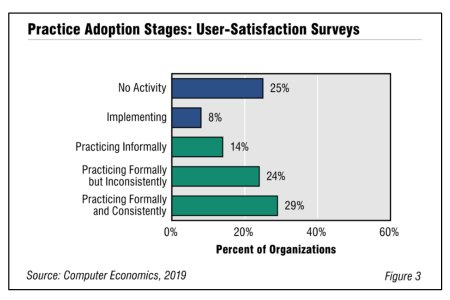
How Are We Doing? Surveying Users and Reporting IT Performance Metrics
Two distinct but related IT management best practices-user-satisfaction surveys and IT performance metrics-are either growing slightly or remaining at a consistent level. But in both cases, many companies could use some help in practicing these two disciplines formally and consistently. This Research Byte provides a summary of our full report on user-satisfaction surveys and IT performance metrics adoption and best practices.
July, 2019
-

Manufacturing Digital Services 2020-2021 RadarView™
The Manufacturing Digital Services 2020-2021 RadarView™ report provides information to assist enterprises in charting out their action plan for digital transformation. It identifies key global service providers and system integrators that can expedite their transformation journey. It also brings out detailed capability and experience analyses of leading vendors to assist manufacturers in identifying strategic partners for their digital transformation journeys. The 97-page report also highlights key industry trends in the manufacturing space and Avasant’s viewpoint on them.
December, 2020
-
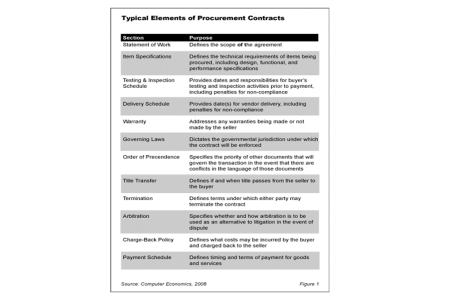
Understanding IT Procurement Contracts
Nearly all IT projects require some sort of procurement, whether it is for hardware, software, or services. Therefore, IT project managers need to understand the major element of IT procurement contracts, as outlined in this post.
November, 2008
-
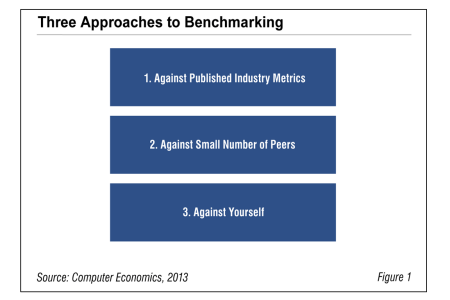
Best Practices for Benchmarking IT Budget Ratios
Benchmarking is a popular way for IT organizations to justify their IT budgets and better focus their efforts toward continuous improvement. But without following certain principles, business leaders will likely question the validity of the outcome. This report, based on many years of benchmarking exercises at Computer Economics, outlines three complementary approaches to benchmarking.
February, 2013
-
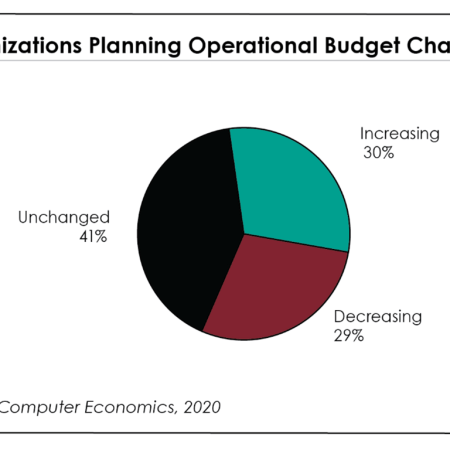
Revisiting the Impact of COVID-19 on IT Organizations in 2020
Our latest survey shows that that a K-shaped recovery of IT spending has begun. Nearly an equal number of companies have increased their IT budgets in response to the pandemic as those that decreased them, with slightly more actually increasing. This report outlines how the pandemic is affecting IT operational budgets, IT capital budgets, IT staff head counts, compensation, outsourcing, budgets for new projects, and the use of the public cloud. It also shows trends in working from home.
October, 2020
-
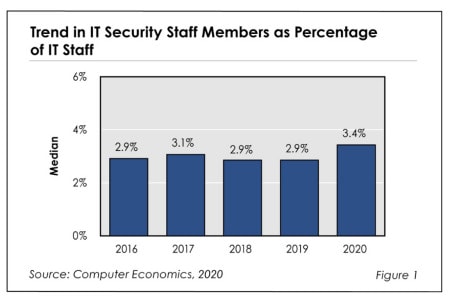
IT Security Staffing Catching Up with Existential Threats
After years of remaining flat in the face of mounting security threats, IT security head count has finally risen as a percentage of the total IT staff. Until 2020, despite a growing array of threats and rising IT security budgets, IT organizations had not been increasing the size of their security teams and instead focused on technology to fight the problem. This Research Byte looks at the factors behind these trends.
November, 2020
-
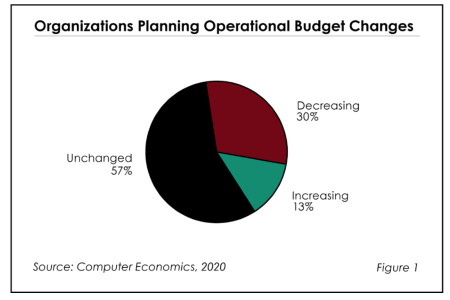
The Impact of COVID-19 on IT Budgets in 2020
The coronavirus pandemic of 2020 has led to a worldwide recession, with a significant impact on IT budgets. Because our current IT spending benchmarks adjust based on levels of business activity, they can still be applied in times of economic decline. Nevertheless, many IT leaders want to understand how IT spending is being influenced by current pandemic and economic conditions. Based on our special survey, this report outlines how the pandemic is affecting IT operational budgets, IT capital budgets, IT staff head counts, compensation, outsourcing, budgets for new projects, and the use of the public cloud.
July, 2020
-

User-Satisfaction Surveys and IT Performance Metrics Adoption and Best Practices 2019
Periodic surveys of user satisfaction are one way to measure how well an IT organization is delivering services, resolving issues, and managing perceptions. If user satisfaction is falling, it may mean that the service desk is understaffed or change requests are not being accommodated. At the same time, collecting data on service levels can be useful for tracking and monitoring performance in a service organization. But taking the next step and publishing the performance metrics for the community can be even more useful. In this report, we look at the maturity of surveying user satisfaction and publishing IT performance metrics.
July, 2019
-

African Market Trends in Technology Services
Few studies examine information technology and business process management in Africa. This report, based on research and interviews, analyses the tech sectors of 11 African countries and examines enabling factors such as information and communication technology infrastructure, government incentives and the regulatory environment. One key finding is that trade and retail, financial services, healthcare and agriculture offer the most opportunities for tech firms. This publication shares insights that will guide companies interested in offering information technology and business process outsourcing services in Africa. The report is also valuable for stakeholders, including tech hubs and start-ups, investors and government organizations.
November, 2020
-
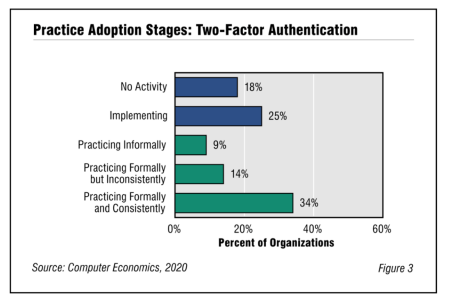
Nobody Loves Two-Factor Authentication
Two-factor authentication (2FA) is an IT security best practice that provides an extra layer of protection for system access, by asking a user for a second means of identification. It mitigates risk of unauthorized access and yet, despite these benefits, our annual survey of IT management best practices shows that too few companies apply two-factor authentication formally and consistently. This Research Byte explores some reasons for the lukewarm adoption of 2FA.
February, 2020
-

COVID-19: Enterprise Resilience Is Tested Like Never Before
With the ongoing pandemic many stories emerged of resilience, responsiveness, and innovation, as many of us are forced to live in the future. People were asked to act against their nature and shift from a collaborative workplace environment to isolation at home, further blurring the lines between work and life. This led to a need to strengthen the digital muscle hinged around remote-first working, cloud acceleration, smart IT operations, and automated business operations. Infosys seems to have already laid down the digital rail tracks which helped boost revenue and profit, reflecting resilience and adaptability of its business model in this time of crisis.
October, 2020
-
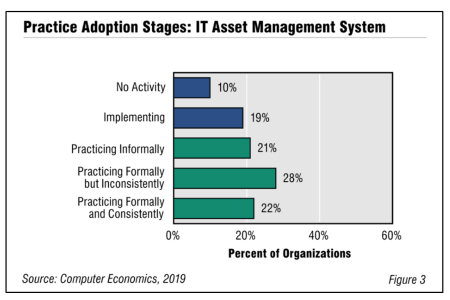
IT Asset Management Adoption Grows, Despite Complicating Factors
For IT organizations, the dream of having all IT assets fully documented and tracked within a formal system remains elusive. While IT organizations have been able to bring certain assets under control, as soon as one area has stabilized, the technology changes. Employee-owned devices and technologies designed to simplify IT asset management such as SaaS keep moving the goal line. This Research Byte provides a summary of our full report on IT asset management adoption and best practices.
August, 2019
-
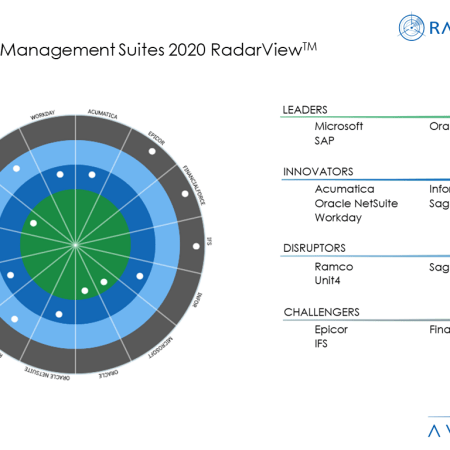
Next Generation Financial Management Suites for the Intelligent Finance Function
Modularization and better integration with third-party applications are expanding financial management (FM) suite capabilities, accelerating adoption across the organizations of all sizes. FM suite vendors offer end-to-end solutions to meet the ever-growing demand, especially among small and midsize businesses. Solutions built on open standards with plug-and-play integration and those that offer great user experience are gaining market share. Leading vendors are investing in OCR, NLP, ML, and RPA to automate financial management processes and build an intelligent finance function. These and other trends are explored in Avasant’s new Financial Management Suites 2020 RadarView™ report.
October, 2020
-

Coronavirus Impact on IT Budgets Still Coming
Benchmarking IT spending and staffing is a complicated task in the best of economic conditions. Benchmarking in the middle of a global pandemic and recession is even more difficult, but also more important. As we prepare the launch of the 31st edition of our annual IT Spending and Staffing Benchmarks report, this is the challenge.
July, 2020
-
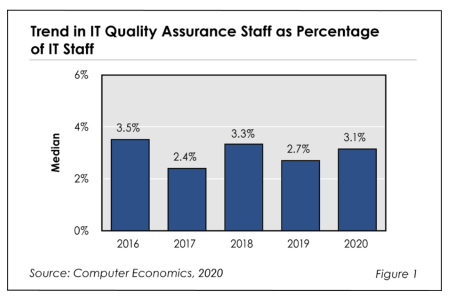
QA Staffing and the Changing Nature of Software Development
IT quality assurance has always been a small but vital role in IT organizations. However, the role of quality assurance as a discrete job position is in a state of flux. The changing nature of software development is a big influence in QA staffing. This Research Byte examines the reasons for the trend and provides a summary of our full report on IT quality assurance staffing ratios.
October, 2020

 Grid View
Grid View List View
List View